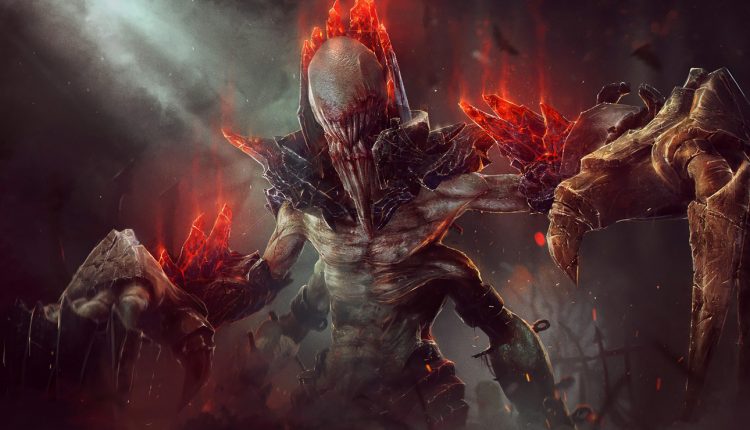Destiny 2 Will Fix Locked Trophies / Achievements For Non-Curse Of Osiris Owners
Need for Speed Payback is the kind of arcade racer that never requires you to lift your foot off the accelerator. Its brazen drifting is effortlessly achieved with aggressive cornering and feathering the brakes, and judicious bursts of nitrous are your best friend down any stretch of open road. There are few games of its ilk nowadays, but perhaps Payback points to a reason why. Despite its impressive visuals and contemporary trappings, Payback’s pick-up-and-play driving model harkens back to Need for Speed Underground and its Fast and the Furious-inspired street racing. Yet, unlike the series’ heyday, Payback’s arcade sensibilities aren’t enough to save the game surrounding it from wallowing in mundanity.
Games shouldn\'t only be fun. They should teach or spark an interest in other things.
Where Need for Speed was once heavily influenced by Vin Diesel and co.’s predilection for tuner cars and Japanese imports, it’s now taking cues from the more recent Dwayne Johnson-centric entries, with heists and over-the-top action as the order of the day. Set in the fictional US state of Fortune Valley, Payback’s derivative tale of betrayal and vengeance takes place against the backdrop of an expansive open world that surprises with its range and variety. The faux-Las Vegas of Silver Rock is a glistening urban jungle of glitz and greed that gradually broadens out into sun-kissed deserts, precarious mountain ranges, and the twisting turns that skirt through its forest wilderness. With a steady framerate and impressive draw distance, Fortune Valley’s slice of diverse countryside is at times, yet its locales are never distinct or memorable enough to make a lasting impression, and speaks to an open world that fulfills its role without ever standing out.
And the same can be said of Payback’s story. After our three plucky protagonists are double-crossed during a heist gone awry at the game’s outset, they set a plan in motion to exact revenge on their conniving defector and the ominous criminal syndicate she represents. It’s a simple enough conceit that gives purpose to the game’s structure, as you’re tasked with defeating various archetypal racing crews in order to earn a shot at your nemesis.

It’s the type of clichéd story you’d ideally want to turn your brain off for; yet there’s not a noticeable shred of self-awareness involved, and its earnesty does it no favours. The dialogue is hammy, but not in a fun B-movie way, and it frequently goes out of its way to reference everything from The Matrix to Dragon Ball Z, with some cringe-inducing millennial slang shoehorned in for good measure. There’s also the kind of forced banter that’s become commonplace in video games and is dutifully featured here–where, for example, calling someone “Lil’ Ty” is absolutely hilarious to anyone within earshot. All of this might have been bearable if the story was confined to intermittent cutscenes, but the narrative is so prevalent in everything you do that there’s little respite from its hackneyed storytelling. Infrequent story missions do at least latch onto the pomp and spectacle of Payback’s Fast and the Furious inspiration, but it falters here, too.
While these moments of vehicle-based histrionics feature its most visually arresting set pieces, they’re frequently spoiled when the game rips control away from you just as things are getting interesting. Whether it’s launching an 18-wheeler off a bridge, perilously driving alongside a truck on the wrong side of the road so your partner can hop aboard, or something as simple as using a car transporter as a ramp; as soon as the game deviates from the simple act of driving from point to point, control is wrestled away in favour of canned cutscenes. This might look more cinematic, but being forced to watch a scene you could feasibly control from behind the wheel is incredibly disheartening, and feeds into Payback’s inherent dullness.
Like previous Need for Speed games, you’ll pull up to checkpoints within the open-world, with race, off-road, drift, drag, and runner events providing plenty of variety. There are also Forza Horizon-esque speed traps and drift challenges spread out across the open-world, and these provide minor distractions on the way to each checkpoint. Race and off-road events speak for themselves, and drift competitions offer an anomalous thrill. Getting your car sideways is so easy that there’s a singular pleasure in simply seeing how long you can maintain a drift for, while drag events are short and sweet but soon grow repetitive as you’re essentially just staring at a meter to time your gear shifts. short and sweet but soon grow repetitive as you’re essentially just staring at a meter to time your gear shifts. Races and time trials are occasionally interspersed between the traditional drag events in an attempt to break up the monotony, but having to heave these cumbersome vehicles around the twisting turns of a race track isn’t a great alternative. Meanwhile, runner events focus on police chases and timed dashes between various points on the map.
The problem is, outside of drift events where it’s a non-factor, the sense of speed in Payback is startlingly lacking. The speedometer may say so, but there’s no tangible sense that you’re hurtling down the road at 160 miles per hour in a fuel-guzzling death trap. Motion blur attempts to sell a fast pace, but never captures the sensation that the world’s rushing by. It’s all surprisingly pedestrian, with passive AI racers and police chases that are elementary. The cops might be aggressive but you never have to outthink or outmaneuver them; escaping is as simple as reaching a specific checkpoint. Pursuits are just glorified time trials, and even the damage model lacks steel-crumpling detail, so takedowns are underwhelming.


















